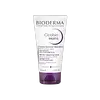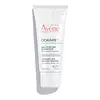What's inside
What's inside
 Key Ingredients
Key Ingredients

 Benefits
Benefits

 Concerns
Concerns

 Ingredients Side-by-side
Ingredients Side-by-side

Water
Skin ConditioningButylene Glycol
HumectantGlycerin
HumectantCaprylic/Capric Triglyceride
MaskingButyrospermum Parkii Butter
Skin ConditioningGlyceryl Stearate
EmollientGlycol Palmitate
EmulsifyingSodium Polyacrylate
AbsorbentPentylene Glycol
Skin Conditioning1,2-Hexanediol
Skin ConditioningCaprylyl Glycol
EmollientDipalmitoyl Hydroxyproline
Skin ConditioningMannitol
HumectantSodium Hyaluronate
HumectantXylitol
HumectantCitric Acid
BufferingRhamnose
HumectantSodium Citrate
BufferingAcetyl Dipeptide-1 Cetyl Ester
Skin ConditioningPolyquaternium-51
Skin ConditioningWater, Butylene Glycol, Glycerin, Caprylic/Capric Triglyceride, Butyrospermum Parkii Butter, Glyceryl Stearate, Glycol Palmitate, Sodium Polyacrylate, Pentylene Glycol, 1,2-Hexanediol, Caprylyl Glycol, Dipalmitoyl Hydroxyproline, Mannitol, Sodium Hyaluronate, Xylitol, Citric Acid, Rhamnose, Sodium Citrate, Acetyl Dipeptide-1 Cetyl Ester, Polyquaternium-51
Water
Skin ConditioningCaprylic/Capric Triglyceride
MaskingGlycerin
HumectantPentaerythrityl Tetracaprylate/Tetracaprate
EmollientTriethylhexanoin
MaskingSqualane
EmollientCetearyl Alcohol
EmollientBehenyl Alcohol
EmollientNiacinamide
SmoothingC20-22 Alkyl Phosphate
EmulsifyingC20-22 Alcohols
Emulsion StabilisingButyrospermum Parkii Butter
Skin ConditioningAquaphilus Dolomiae Ferment Filtrate
Skin ConditioningArginine
MaskingCaprylyl Glycol
EmollientCetearyl Glucoside
EmulsifyingCopper Sulfate
Skin ConditioningSodium Benzoate
MaskingSodium Hyaluronate
HumectantSodium Hydroxide
BufferingTocopheryl Acetate
AntioxidantTromethamine
BufferingXanthan Gum
EmulsifyingZinc Sulfate
AntimicrobialWater, Caprylic/Capric Triglyceride, Glycerin, Pentaerythrityl Tetracaprylate/Tetracaprate, Triethylhexanoin, Squalane, Cetearyl Alcohol, Behenyl Alcohol, Niacinamide, C20-22 Alkyl Phosphate, C20-22 Alcohols, Butyrospermum Parkii Butter, Aquaphilus Dolomiae Ferment Filtrate, Arginine, Caprylyl Glycol, Cetearyl Glucoside, Copper Sulfate, Sodium Benzoate, Sodium Hyaluronate, Sodium Hydroxide, Tocopheryl Acetate, Tromethamine, Xanthan Gum, Zinc Sulfate
 Reviews
Reviews

Ingredients Explained
These ingredients are found in both products.
Ingredients higher up in an ingredient list are typically present in a larger amount.
This ingredient is also known as shea butter. It is an effective skin hydrator and emollient.
Emollients help soothe and soften your skin. It does this by creating a protective film on your skin. This barrier helps trap moisture and keeps your skin hydrated. Emollients may be effective at treating dry or itchy skin.
Shea butter is rich in antioxidants. Antioxidants help fight free-radicals, or molecules that may harm the body. It is also full of fatty acids including stearic acid and linoleic acid. These acids help replenish the skin and keep skin moisturized.
While Shea Butter has an SPF rating of about 3-4, it is not a sunscreen replacement.
Shea butter may not be fungal acne safe. We recommend speaking with a professional if you have any concerns.
Learn more about Butyrospermum Parkii ButterThis ingredient is an emollient, solvent, and texture enhancer. It is considered a skin-softener by helping the skin prevent moisture loss.
It helps thicken a product's formula and makes it easier to spread by dissolving clumping compounds.
Caprylic Triglyceride is made by combining glycerin with coconut oil, forming a clear liquid.
While there is an assumption Caprylic Triglyceride can clog pores due to it being derived from coconut oil, there is no research supporting this.
Learn more about Caprylic/Capric TriglycerideCaprylyl Glycol is a humectant and emollient, meaning it attracts and preserves moisture.
It is a common ingredient in many products, especially those designed to hydrate skin. The primary benefits are retaining moisture, skin softening, and promoting a healthy skin barrier.
Though Caprylyl Glycol is an alcohol derived from fatty acids, it is not the kind that can dry out skin.
This ingredient is also used as a preservative to extend the life of products. It has slight antimicrobial properties.
Learn more about Caprylyl GlycolGlycerin is already naturally found in your skin. It helps moisturize and protect your skin.
A study from 2016 found glycerin to be more effective as a humectant than AHAs and hyaluronic acid.
As a humectant, it helps the skin stay hydrated by pulling moisture to your skin. The low molecular weight of glycerin allows it to pull moisture into the deeper layers of your skin.
Hydrated skin improves your skin barrier; Your skin barrier helps protect against irritants and bacteria.
Glycerin has also been found to have antimicrobial and antiviral properties. Due to these properties, glycerin is often used in wound and burn treatments.
In cosmetics, glycerin is usually derived from plants such as soybean or palm. However, it can also be sourced from animals, such as tallow or animal fat.
This ingredient is organic, colorless, odorless, and non-toxic.
Glycerin is the name for this ingredient in American English. British English uses Glycerol/Glycerine.
Learn more about GlycerinSodium Hyaluronate is hyaluronic acid's salt form. It is commonly derived from the sodium salt of hyaluronic acid.
Like hyaluronic acid, it is great at holding water and acts as a humectant. This makes it a great skin hydrating ingredient.
Sodium Hyaluronate is naturally occurring in our bodies and is mostly found in eye fluid and joints.
These are some other common types of Hyaluronic Acid:
Learn more about Sodium HyaluronateWater. It's the most common cosmetic ingredient of all. You'll usually see it at the top of ingredient lists, meaning that it makes up the largest part of the product.
So why is it so popular? Water most often acts as a solvent - this means that it helps dissolve other ingredients into the formulation.
You'll also recognize water as that liquid we all need to stay alive. If you see this, drink a glass of water. Stay hydrated!
Learn more about Water